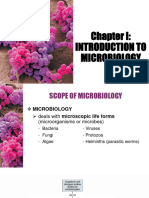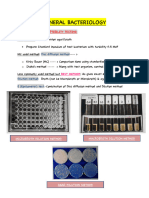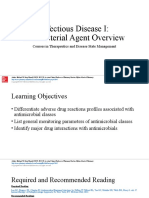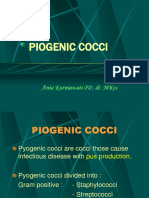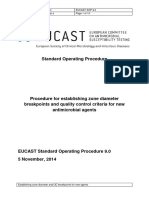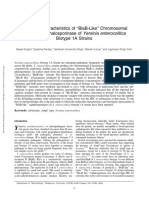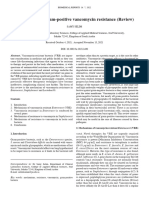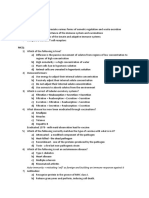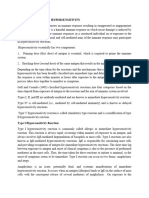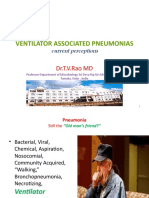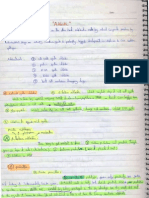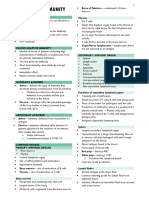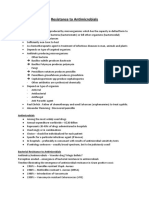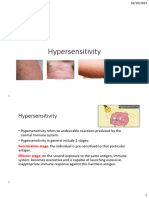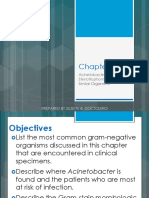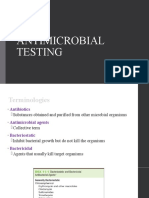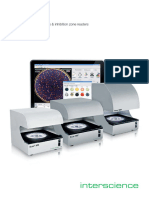0% found this document useful (0 votes)
137 views4 pagesBacte Lab Midterm
This document provides information about different methods for antimicrobial susceptibility testing:
1) Broth dilution method determines the minimum inhibitory concentration (MIC) of antimicrobials against bacteria by incubating serial dilutions of antimicrobials with a standardized bacterial inoculum.
2) Agar dilution method is a reference method used for anaerobes and N. gonorrhoeae. It involves spot inoculating bacteria onto agar plates containing varying antimicrobial concentrations.
3) Disk diffusion method (Kirby-Bauer test) qualitatively tests the susceptibility of aerobic/facultative bacteria to 12 antimicrobial disks on an agar plate.
Uploaded by
2234382Copyright
© © All Rights Reserved
We take content rights seriously. If you suspect this is your content, claim it here.
Available Formats
Download as PDF, TXT or read online on Scribd
0% found this document useful (0 votes)
137 views4 pagesBacte Lab Midterm
This document provides information about different methods for antimicrobial susceptibility testing:
1) Broth dilution method determines the minimum inhibitory concentration (MIC) of antimicrobials against bacteria by incubating serial dilutions of antimicrobials with a standardized bacterial inoculum.
2) Agar dilution method is a reference method used for anaerobes and N. gonorrhoeae. It involves spot inoculating bacteria onto agar plates containing varying antimicrobial concentrations.
3) Disk diffusion method (Kirby-Bauer test) qualitatively tests the susceptibility of aerobic/facultative bacteria to 12 antimicrobial disks on an agar plate.
Uploaded by
2234382Copyright
© © All Rights Reserved
We take content rights seriously. If you suspect this is your content, claim it here.
Available Formats
Download as PDF, TXT or read online on Scribd
/ 4



